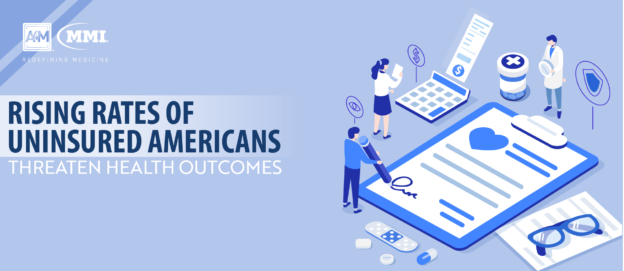Requiring a coordinated response from the government, healthcare system, and private sector, the COVID-19 outbreak has placed an unprecedented burden and stress on countries across the globe. In the United States, federal policies are being updated rapidly in response to the shifting demands of the healthcare system as it fights to curb the virus. As such, insurance providers are playing a critical role in ensuring widespread access to care and have taken decisive action to help both patients and providers in combating the novel coronavirus.
From state insurance regulators, who are limiting the amounts patients can owe for COVID-19 care, to insurance companies and employers who have amended many rules to eliminate deductibles and co-payments, coverage changes have been occurring on a large scale. As the outbreak is developing and dynamically changing the medical landscape, below are some of the latest policies to go into effect in response to COVID-19.
COVID-19 Testing
Per the latest legislation passed by Congress, coronavirus testing is free for all individuals regardless of insurance status – as is the cost of a doctor’s visit or trip to the emergency room to receive the test. The recently passed Families First Coronavirus Response Act requires all group health plans and individual health insurance providers to cover testing and associated visits related to the diagnosis of COVID-19. In addition, several states, including California, New York, and Washington have implemented additional requirements on insurance companies to cover testing costs.
Both private insurance companies and employers have volunteered to waive the costs of testing. In addition, the Families First Coronavirus Response Act requires most private health companies to cover testing for COVID-19.
Medicare and Medicaid will also cover the costs of a coronavirus test, while the uninsured should also be able to get tested at no cost per the latest guidelines. Patients who recently lost their jobs may qualify for Medicaid or be able to sign up for a health plan under the Affordable Care Act to gain access to free testing.
COVID-19 Treatment Costs
In response to the COVID-19 outbreak, health insurance providers are waiving out-of-pocket costs for hospital visits and many are funding treatment of COVID-19 as well. Cigna and Humana have waived out-of-pocket costs for treatment, as have Aetna, Florida Blue, Harvard Pilgrim and UnitedHealth Group. One of the largest insurers in the nation, Blue Cross and Blue Shield, covers nearly 6 million individuals under its Federal Employee Program and has said it would waive co-payments and deductibles for medically necessary treatment.
Although, there are restrictions to the coverage of treatment costs as some insurers have waived cost sharing only for the upcoming two months while others have eliminated expenses only for hospital stays. In addition, it remains unclear how much patients may be required to pay out of pocket; the Kaiser Family Foundation estimates COVID-19 care can cost around $20,000, bringing potential out-of-pocket bills to around $1,300 depending on the patient’s plan, location of care, and disease severity.
COVID-19 Complications Care
Most private insurance plans will likely cover services needed to treat COVID-19 complications although, there is currently no federal guidance requiring them to do so. In addition to covering testing, Medicare will cover both outpatient and hospitalization services. During the COVID-19 crisis, Medicare patients are covered if they need to be transferred to skilled care regardless of previous hospitalization. However, the program does not cover long-term stays in long-term care facilities at this time.
Telemedicine Coverage
According to the latest policy changes, telehealth will now be covered under Part B for all traditional Medicare enrollees for services not limited to COVID-19 care. The definition of telemedicine will be expanded to allow patients to connect with healthcare providers from their homes via video conferencing or other digital methods. To further ease access to care, the requirement that telemedical care be provided by a medical professional the patient has seen within the last three years has been waived.
The widespread shift to telehealth has proven critical to easing the burden on the U.S. healthcare system by “allowing hospitals to care for people who need it most, while limiting the exposure of health care workers and patients to the disease,” explains a one-pager published by America’s Health Insurance Plans. “Telehealth is especially beneficial for patients who are at a higher risk when leaving the home to commute to the doctor’s office.”
Out-of-Network Bills
Despite the significant efforts made toward expanding insurance coverage at this time, patients may still be required to pay out-of-network bills, for example, when they are treated by an out-of-network physician. Data from the Kaiser Family Foundation indicate that nearly one in five patients admitted to the hospital with serious cases of pneumonia were faced with out-of-network bills after treatment. To further ease patients’ financial burden related to COVID-19, some hospital systems are pausing collections for the foreseeable future.
Alongside the aforementioned updates, many insurance coverage providers are proposing further changes to expand coverage and ease the financial burden during this COVID-19 crisis. Healthcare providers should remain current on the latest developments in coverage policies as they may affect both themselves as well as their patients.
For further assistance with navigating the changing insurance coverage landscape, the America’s Health Insurance Plans’ website offers a comprehensive list of providers and their responses to COVID-19, which can be accessed here.


